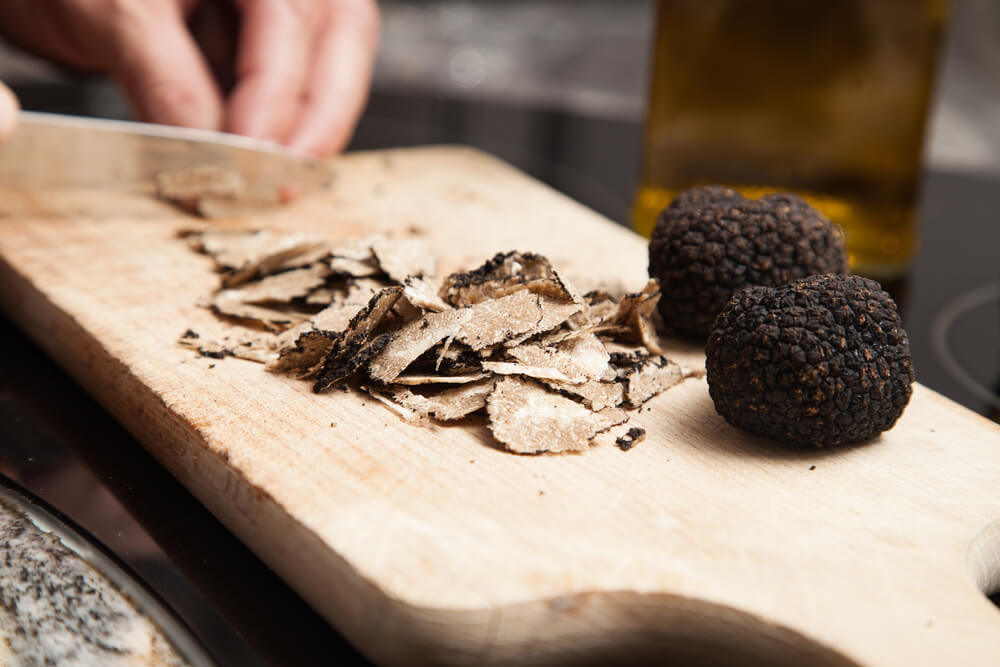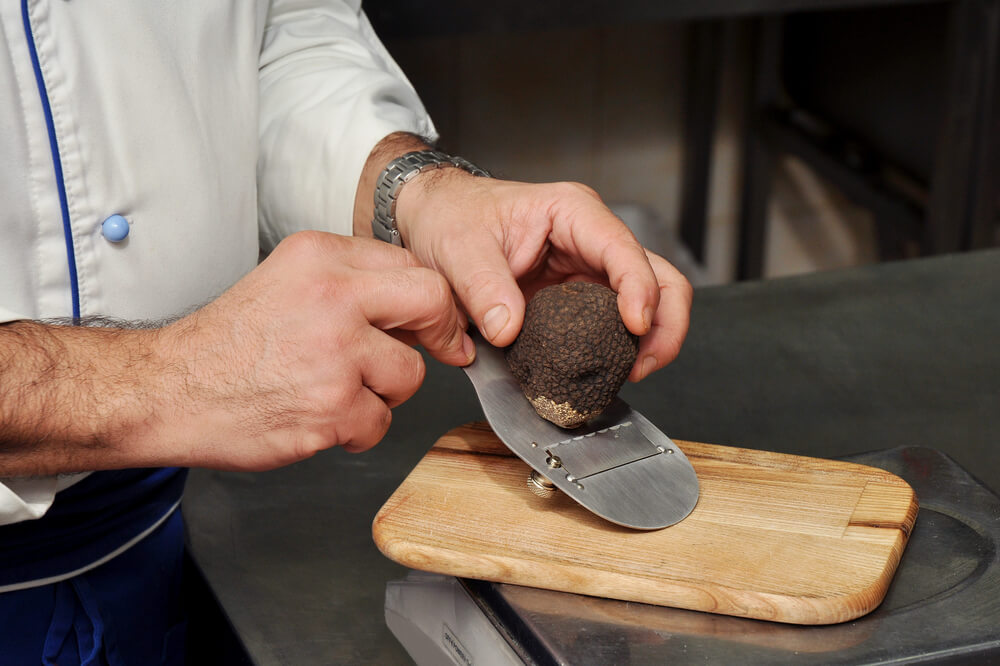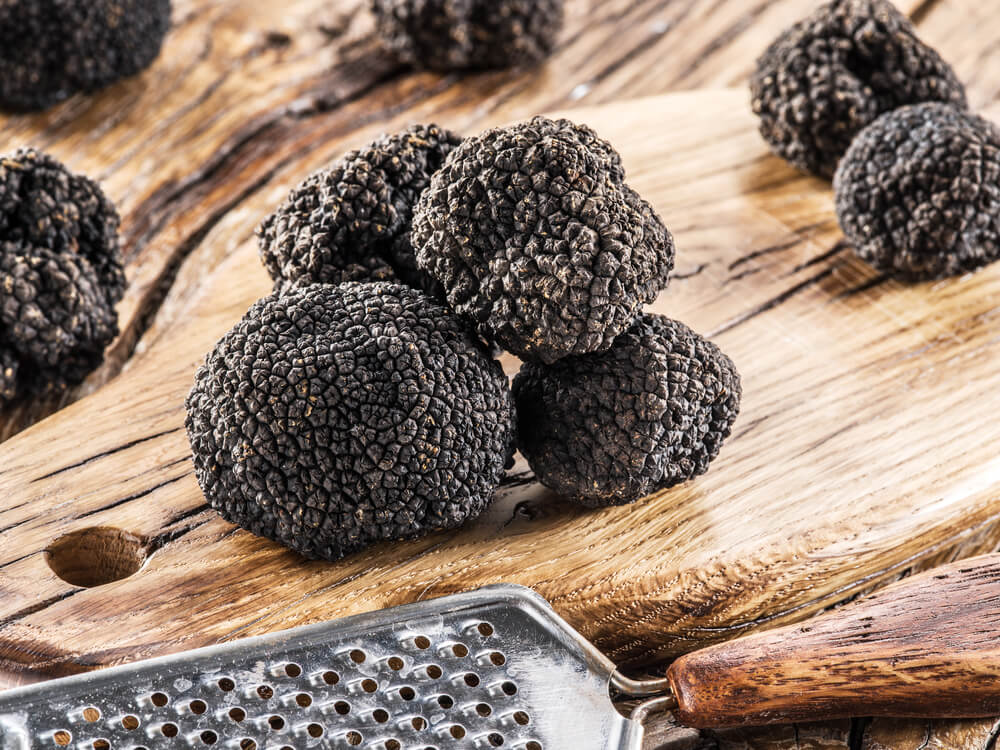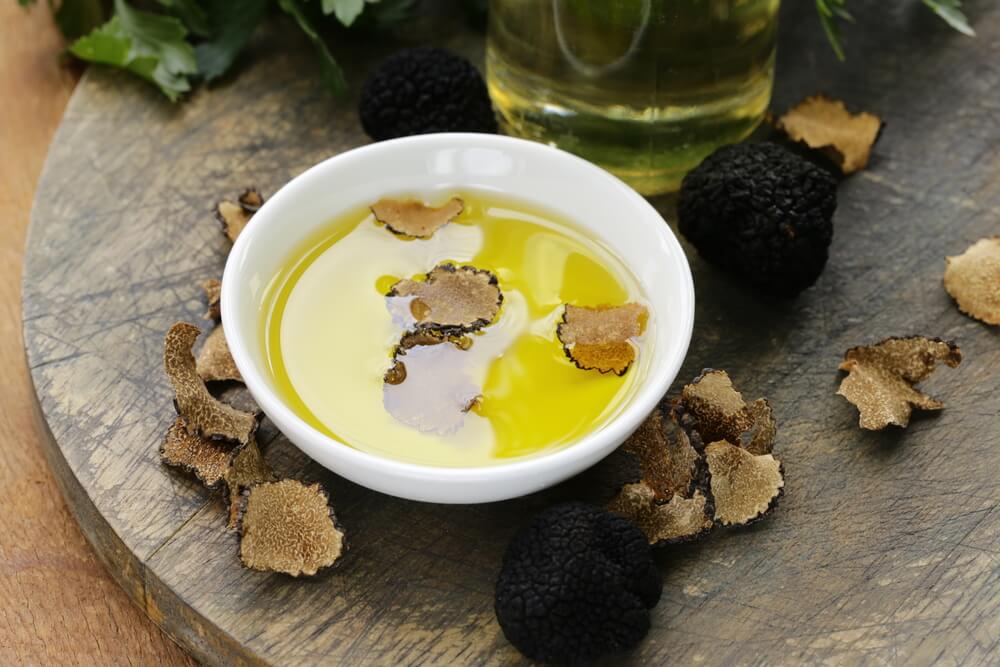

Truffles are as misunderstood as they are highly prized in the culinary world. You’ve probably seen chefs on cooking shows fawn over their delicate earthy flavors and aromas. But few home cooks ever get access to real truffles, let alone learn how to use them properly.
The good news is that’s changing quite rapidly. Truffles are becoming more mainstream, and there’s no reason you shouldn’t use them in your cooking endeavors. All you need is a short introduction to truffle cooking. And that’s what we’re going to give you in this post.
Before getting into all the cooking techniques and such, it’s best to understand what truffles are and where they come from. Trust us; this brief overview is worth it.
Truffles are a kind of mushroom. The name comes from the Latin word tufer, which means lump. Ancient Romans believed truffles were made by lightning striking the earth near trees. Their use in cooking dates back thousands of years.
Edible truffles are a delicacy in most European cuisines and some Middle Eastern cuisines, as well.
But just saying they’re a mushroom may give you the wrong idea. Truffles are nothing like the anemic white mushrooms you might be picturing, half-wilted in a styrofoam package on a grocery store shelf. These mushrooms are far more robust, with a complex and layered flavor profile.
They’re about 50 grams in weight and about the size of a golf ball, on average. But that’s enough of the history lesson; you’re here to learn about cooking with truffles, so let’s get right into it.
The first, and most important, thing to remember about using truffles is their strong taste. There’s no way to overstate how important it is to use restraint when cooking with truffles. If you use too much, they will completely overtake a dish, and you’ll be out a decent chunk of change for your troubles.
Another important rule of thumb is that you’re never going to make a truffle dish. It’s never Truffles with gnocchi; it’s always gnocchi with truffles. In other words, you don’t want truffles to be the dominant flavor. Truffles add an elegant and robust finish to foods, but they make a poor centerpiece.
Ironically, the best way to cook with truffles is to avoid cooking them at all. Cooking them in any way will only denature them and remove some or all of their characteristic flavors and aromas. Instead, you want to use them fresh whenever possible.
Let’s recap. You want to use truffles sparingly, not let them dominate a dish, and use them fresh if possible. Put those guidelines together, and you’re left with grating or slicing as the best techniques to use them.

Shaved truffles are the most common presentation. In restaurant settings, servers often shave truffles onto your dish at the table to get the freshest experience possible. At home, you don’t need to be that dainty, but you don’t want to shave your truffles before you’re ready to serve.
You can shave truffles just fine with a quality mandolin, or you can use a specially designed truffle shaver. The truffle shaver offers a few advantages, such as a serrated blade to catch the mushrooms as you slice. However, it’s not a requirement, and you can even shave them with a knife if your slicing skills are impeccable.
You can also grate truffles with a Microplane for maximum surface area usage. The key is to grate them when you’re about to eat – think of them as fresh herbs you’re adding just as you serve the dish.
Since black truffles are by far the most common and accessible, it’s probably best to start with them. Once you’ve got some experience, you can move on to more exclusive and expensive ingredients. Or, stick to black ones; they’re always an excellent choice, and you won’t miss out on much.
Eggs and black truffles are a fantastic pair. If you’re making anything that features eggs as one of the main ingredients, you can rest assured truffles have a place in it.
Black truffles are even an excellent complement to simple scrambled eggs. Sautee black truffle slivers in warm butter, and you’ll have the best-scrambled eggs you’ve ever tasted.
They’re also excellent in dips. Grated black truffle makes a spinach dip pop like nothing else. Simply add a few shaves and fold them into the dip when it’s ready to serve. Sauces also love truffles, such as a pan sauce for steak.
The basic rule you want to follow is not to dry out the mushrooms. Fat is the vehicle for truffle’s flavors, so you always want to use it in rich foods if possible. A risotto, for instance, is an ideal dish for truffles. You can add it to the stock when you’re warming it to get the flavors deeply infused in the rice.
Another excellent dish for black truffles is pizza. Just about any pizza will do, and all you want to do is shave the truffles on top of it when it’s finished cooking.
Never put truffles on a pizza before it’s done. You’ll end up with baked truffle chips, which are neither tasty nor have a nice texture.
It may surprise you to find out there are three types of edible truffles. Each grows in different parts of the world and has a distinct flavor profile.
White truffles are common to southern Europe and famous in Italy. Italy’s Piedmont region is renowned for its white truffles, and the regional economy is highly reliant on the truffle trade.
White truffles are earthy but have a cheesy and garlicky flavor profile. They make a stellar complement for pasta and egg dishes.
As mentioned before, black truffles are the most prominent and probably the most commonly used as well. They’re native to France and feature craggy skin. Black truffles have a relatively mild flavor, which makes them ideal for a wide range of dishes.
Black truffles are a little more accessible than white truffles. You can break the “no cooking” rule with black truffles and sautee them gently to intensify the flavor on occasion.
Lastly, summer truffles are a subset of black truffles. Also known as burgundy truffles, they have a hazelnut aroma and can vary in intensity depending on when they’re harvested. Summer truffles are by far the most expensive and rare.

The first thing most people learn about truffles is how expensive they are. And if you’ve ever tasted this culinary delicacy, you’ll probably agree their flavor is exceptional. Indeed, some truffles can cost thousands of dollars a pound.
In a nutshell, truffles are expensive because they’re rare and difficult to harvest. But that’s only part of the story.
Truffles grow deep underground and typically in the vicinity of oak trees. They play an essential part in the root system of trees. Therefore, harvesting them is challenging, and foragers use trained dogs and pigs to help detect and unearth them.
Another important factor that adds to the price of these mushrooms is logistics. They have a short shelf-life and need to be kept in ideal conditions to maximize their freshness. If you live in an area far removed from truffle country, expect to pay considerably more.
For a long time, foraging was the only way to obtain them. However, mycologists have found ways to cultivate them under the right conditions. The problem is maintaining those conditions over the seven- to ten-year span truffles need to mature.
Despite this, truffle farms in parts of the United States and Australia are becoming more common, and the price of truffles is slowly adjusting.
You can expect to pay around $30 per ounce for black truffles. White truffles can be far more expensive, and you could end up paying over $100 an ounce. The good news is an ounce will probably be enough for several meals.
So, you’ve got a craving for truffles, and you’re ready to fork over the premium pricing. Excellent; all you need now is a supplier. Unfortunately, they’re not available on every store shelf, and you might have to dig a little to get a high-quality product.
Some specialty stores carry truffles regularly. If there’s a gourmet ingredients store near you, that would be the best place to start looking.
But buying truffles can be a painless experience. You can shop from one of the many excellent online retailers who specialize in truffles and other high-class ingredients. Eataly.com is one of the best-rated sources for a variety of truffles and truffle products.
Gourmet Foodstore is another specialty retailer that has a spectacular assortment of truffle products and fresh truffles. But you should align your expectations to the truffle realities. They’re harvested seasonally, and if they’re not in season, you probably won’t find fresh truffles anywhere. If you do find them out of season, you’ll pay several times what you otherwise would.
Urbani Truffles is a company that specializes in truffles and everything truffle related. Besides selling some of the finest truffles on the market, they provide recipes and truffle education for buyers.
Luckily, there are many varieties of preserved truffles you can find year-round. These preserved mushrooms represent more than half the total market. They’re usually preserved in cans or jars, boiling them briefly in brine. Always look for the so-called “first choice” truffles if you’re buying them this way.
The preservation process is decent, and most of the flavors and aromas remain. Typically, they last about a year to two years in this presentation, so always check the sell-by date.
If you’re going to opt for this variety, you’ll need to learn how to prepare truffles that have been preserved. First, remove them from the brine and pat them dry with a paper towel. Then, let them sit on the towel to dry further.
Once they’re dry, slice them with a mandolin or slicer and sautee the slivers very briefly in oil. Let them cool and add them to a finished dish as if they were fresh. It’s not the same as using fresh truffles, but it’s a reasonable facsimile and significantly more affordable.
Let’s face it: truffles are not cheap. But you shouldn’t feel left out of the culinary loop just because they’re a little out of your budget. There are several great alternatives to using fresh truffles. You’ll get a lot of the same tastiness and fragrance without having to get a second mortgage.
Truffle flavor infuses into oils readily and makes for a fantastic ingredient. Oils are great at carrying all sorts of flavors, and truffle oil are preferable to fresh mushrooms. For instance, sauteing onion in truffle oil for most any dish will add an earthy flavor dimension and elevate the dish.

Butter is another terrific carried for truffle flavor, and it’s made with both white and black truffles. If you like to use flavored butter on your steak, this variation will knock your socks off. You can also use it in mashed potatoes, polenta, and most other meals that call for butter.
Now that we’ve covered how to eat truffles and use them, let’s go over some techniques that will make your truffles last. Truffles have the interesting property of infusing into foods they’re near. So when you store them in specific ways, you’ll end up with truffle-flavored foods without ever using them directly.
If you just want to extend the lifespan of fresh truffles, that’s simple enough. Wrap each truffle in a paper towel and put them in a zip-top bag. Squeeze the air out of the bag gently and seal it. Then, place the bag in your refrigerator and only open it when you need to. They will stay fresh for up to two weeks this way.
Change the paper towels every few days to void moisture from accumulating. You don’t want them to dry out, but mold will start to grow on them if they’re too humid. If that happens, brush the mold off when you replace the paper towel.
You can also store them with eggs. Believe it or not, fresh eggs will take on the aroma of truffles when stored together. Store truffles with fresh eggs in a jar or zip-top bag for three days to get wonderful eggs with an earthy aroma.
You can also store truffles with rice to transfer some of the flavors into the rice. However, chefs disagree about this practice. If you store truffles with rice, it will dry them out severely and render them practically unusable. However, you’ll still have some of the flavors in the rice. Ultimately, it’s up to you to decide if this is a worthwhile use of truffles.
Lastly, you can freeze truffles to extend their useful life for several months. One way to do it is to wrap them individually in aluminum foil and then place them in a zip-top bag. Squeeze the air out of the bag and put them in the freezer. Alternatively, put them in a jar and create an air seal by submerging in oil and freeze.
It’s worth noting that none of these storage techniques will preserve truffles perfectly. The best way to enjoy them is as soon as possible after harvest.
Hopefully, this guide gave you a good overview of what truffles are and how to cook with them. The most important thing you need to remember is to use them fresh. If you have to use preserved truffles, it’s not the end of the world, but it will diminish the experience.
Truffles are ultimately meant to be enjoyed. If you get your hands on some, don’t be afraid to use them. If you wait too long, they’ll just dry up, and you’ll have paid for an expensive ingredient you never got to enjoy.
At Stubborn Seed restaurant in Miami, we love truffles. You can experience them in all their glory by ordering our crunchy truffle bravas or delectable truffle chicken. Call us today to make a reservation, and we’ll make sure the truffles are fresh when you get here.